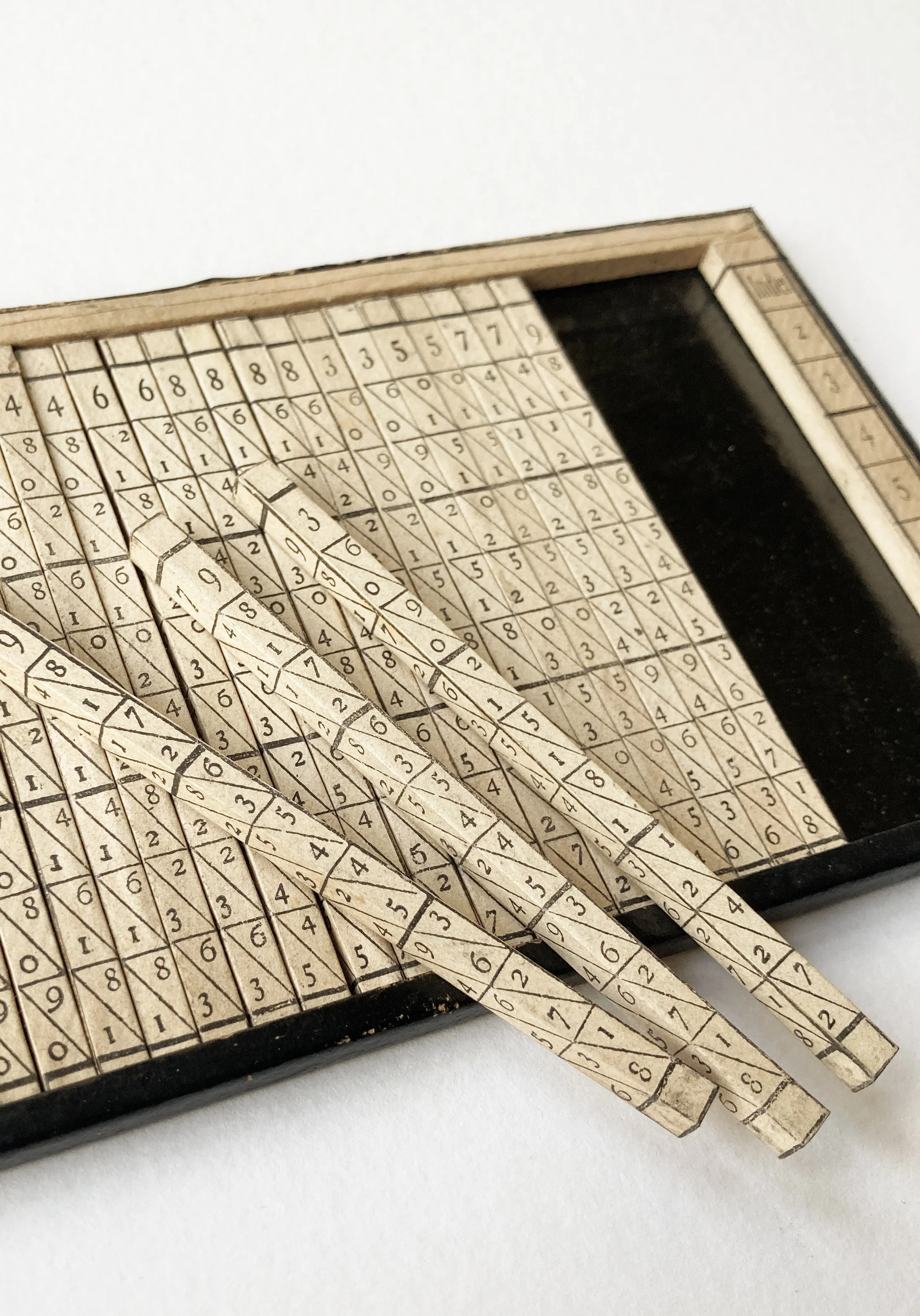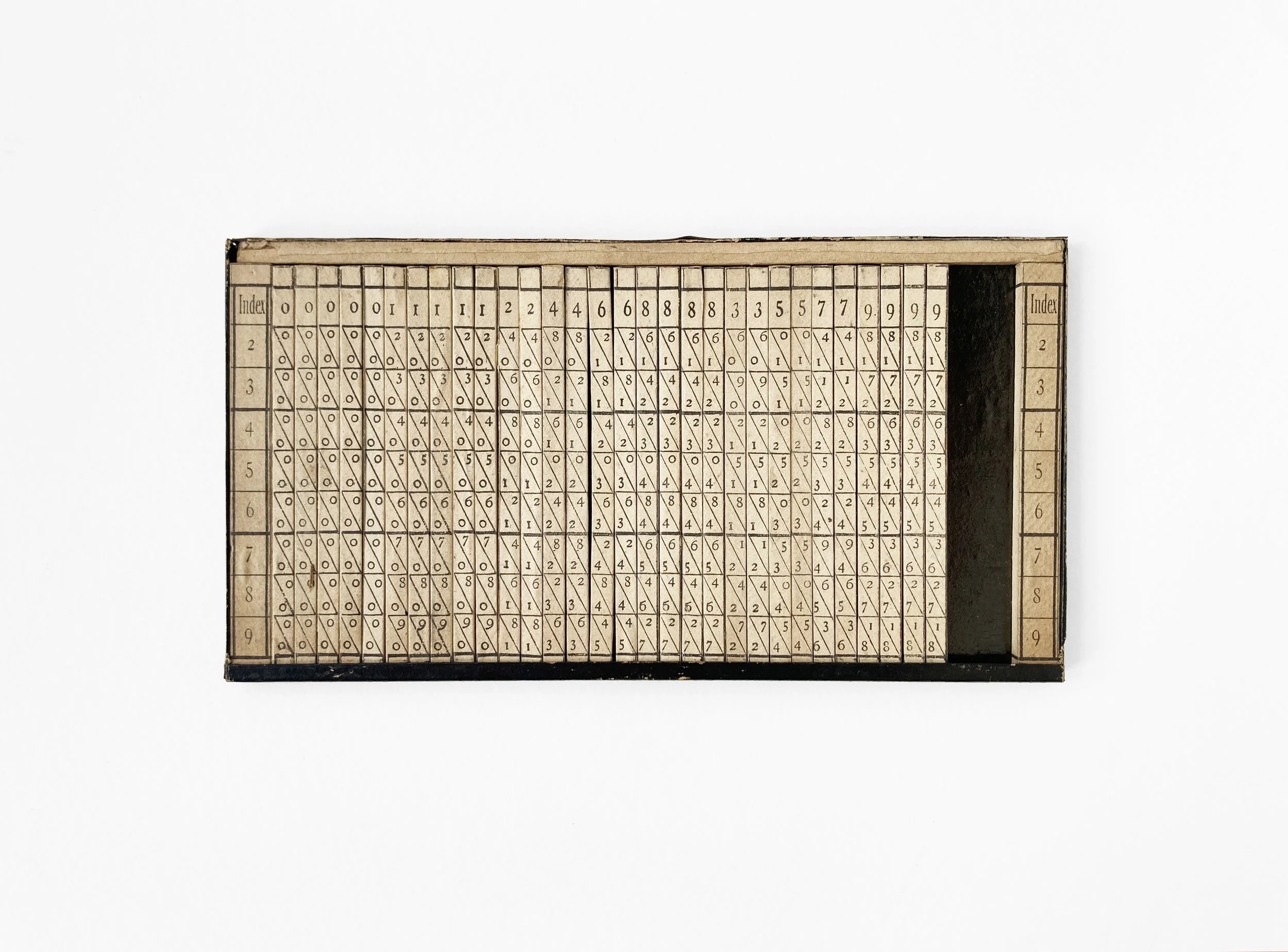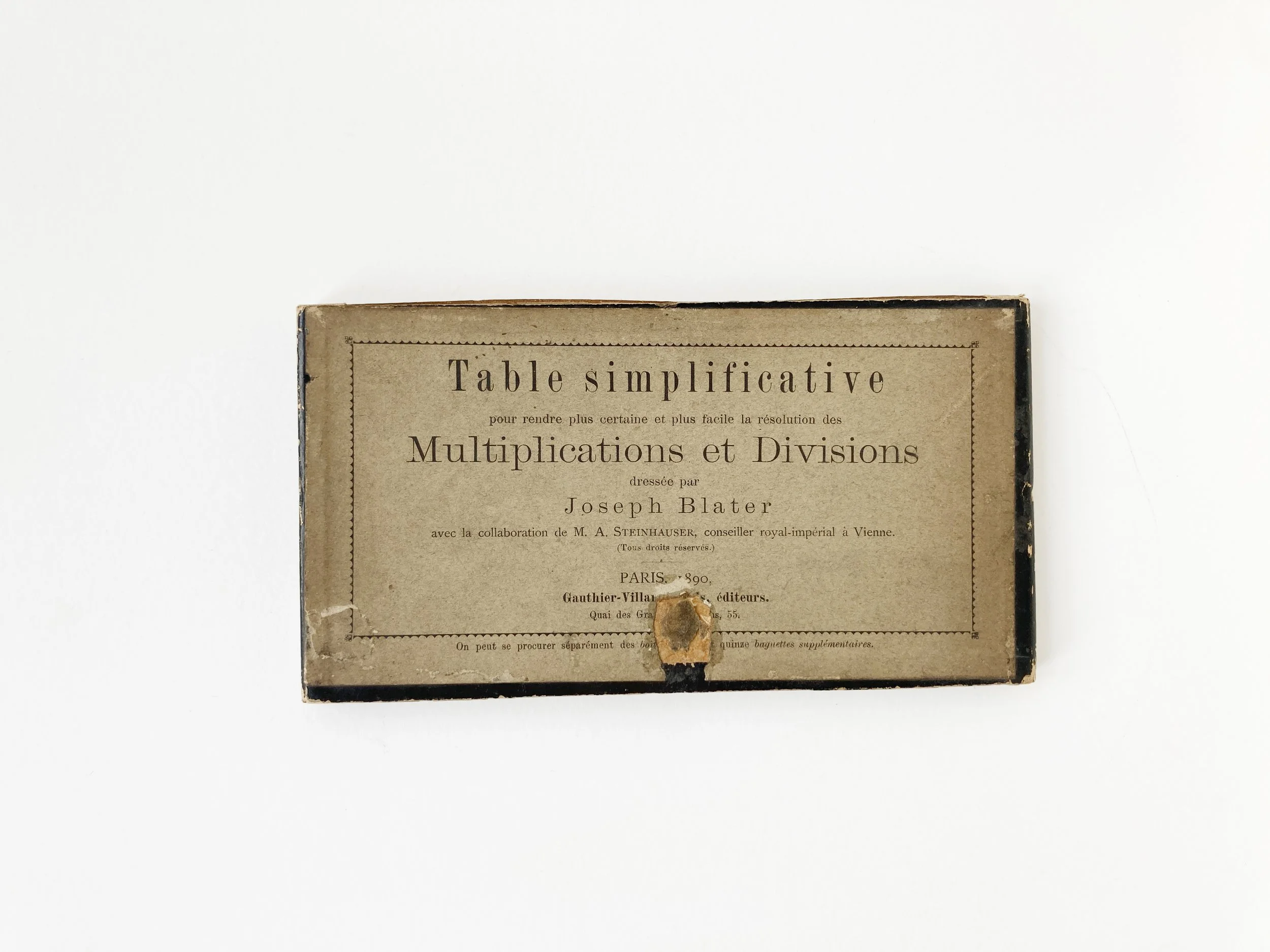NAPIER'S BONES: AN ELEGANT AND VERY SCARCE 'PAPER COMPUTER'



NAPIER'S BONES: AN ELEGANT AND VERY SCARCE 'PAPER COMPUTER'
BLATER, Joseph (fl. 1880–1900), and STEINHAUSER, Anton (1842–1898)
Table simplicative pour rendre plus certaine et plus facile la résolution des Multiplications et Divisions
Paris: Gauthier-Villars, 1890
110 x 204mm; card case with printed paper label, containing a metal tray with 30 paper-covered wooden rods (complete)
An incredibly rare survival. Blater’s updated version of ‘Napier’s Bones’ was thought to be a spurious copyright entry until a set was discovered in 1998 (offered by the antique dealer Tesseract). This second known set is complete with all 30 paper-covered rods (the space in the tray is to facilitate calcuation).
Napier’s original design featured a set of 10 rods that could be set against an index column, with the product of the index line and the top line being read off along the diagionally divided sections (with numbers adding and carrying across rods). Blater’s innovation was to increase massively the range of possible calculations that could be done at one stroke – presumably so that a greater number of decimal places could be included in calculations.
Blater is a little known figure. He was apparently an amateur mathematician based in Wörrstadt near Mainz. He published a number of tables, the best known of which is his table of quarter squares (1887), itself a useful aid to calculation, as it removed the need for dividing the product of a calculation by 4 when using the method of adding/subtracting squared numbers. Here he collaborates with Anton Steinhauser, a well known Austrian mathematician and physicist.
All examples of Napier’s Bones are scarce on the market. The present set is, for example, much rarer than the well known version issued by Henri Genaille and Edouard Lucas earlier in the 1880s.

